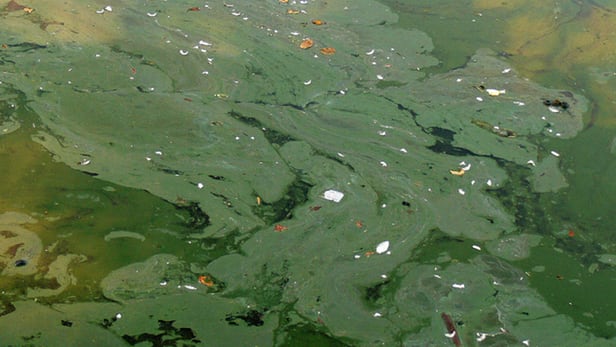Cyanobacteria, more commonly known as blue-green algae, can potentially be quite nasty. Some types of the bacteria produce toxins, which can poison humans or other animals that ingest water in which they’re present. Now, however, scientists are developing a portable sensor that will instantly alert users to the presence of the microbes in water samples.

You probably wouldn’t need to be told not to swim in this – a particularly scummy cyanobacteria infestation
According to the World Health Organization, cyanobacterial toxins can cause reactions such as skin irritation, stomach cramps, vomiting, nausea, diarrhea, fever, sore throat, headache, muscle and joint pain, blisters of the mouth and liver damage. Those toxins can be ingested not only through deliberate drinking of the water, but also via bathing.
When cyanobacteria levels are very high in a lake or other body of water, it’s pretty obvious – the water is covered with a smelly blue-green scum. When it comes to lower but still dangerous levels, however, people usually have to rely on warnings issued by local health authorities. These warnings are based on tests performed on water samples in a laboratory, to determine if toxins are present.
Researchers from the VTT Technical Research Centre of Finland are now in the process of creating an inexpensive thermometer-sized device, that can provide that same information to ordinary users, on the spot. It contains antibodies that react to the presence of cyanobacterial toxins in a provided water sample. Within minutes, users will know if the lake that the sample was taken from is safe for swimming.
VTT states that the device could be commercially available within two to three years.
Source: http://newatlas.com/
Dear User/Visitor! Please, answer on our questions: tick off one of the positions – your answer will make us able to improve our site and make it more interesting and useful!

